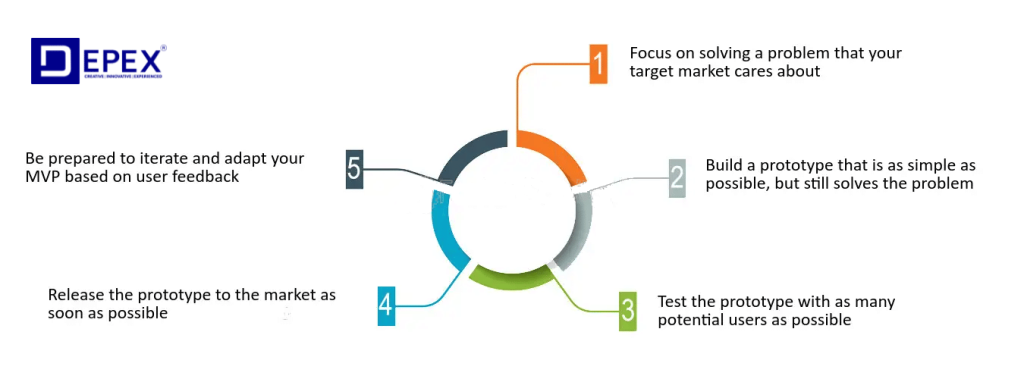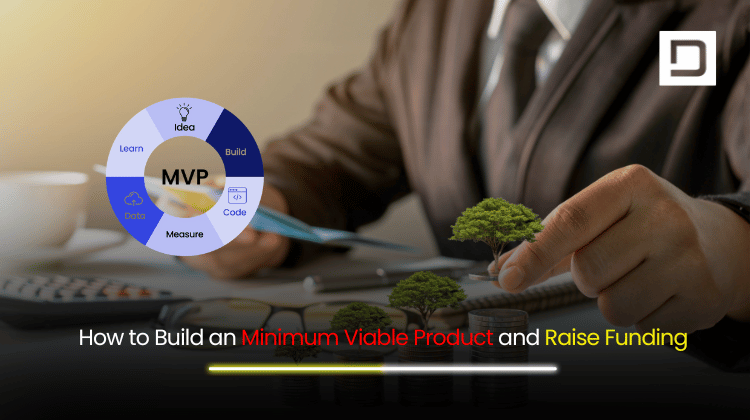How to Build an MVP and Raise Funding in 2025: A Guide for Mobile App Startups
In the fast-evolving tech landscape of 2025, launching a successful mobile app begins with a well-structured Minimum Viable Product (MVP). An MVP is not just a “light” version of your app—it’s a strategic tool that helps validate your idea, test the market, attract early adopters, and most importantly, secure funding.
At Depex Technologies, we’ve helped countless startups transform their ideas into scalable mobile apps, starting with robust MVPs. In this blog, we’ll walk you through everything you need to know about building an MVP and attracting investors in 2025.
What is an MVP in Mobile App Development?
An MVP (Minimum Viable Product) is a simplified version of your mobile app that includes only the core features needed to solve a specific problem for early users. The goal is to launch quickly, gather feedback, and iterate rapidly without committing significant resources upfront.
Why MVPs are Essential in 2025
- Investor Expectations Have Evolved: Investors in 2025 want more than just an idea. They want to see a working product with initial traction.
- Market Saturation: With thousands of apps launched daily, MVPs help you test product-market fit efficiently.
- AI-Powered Competition: Leveraging MVPs helps you stay ahead by focusing on customer validation rather than building features that may not be needed.

Step-by-Step Guide to Building an MVP for Your Mobile App
1. Identify the Problem and Target Audience
Every successful MVP starts with solving a real problem. Conduct user interviews, competitor analysis, and surveys to understand pain points.
Tip: Use tools like Google Trends, Reddit, and Quora to explore what users are talking about.
2. Define the Core Features
Limit your MVP to features that solve the main problem. Avoid the temptation to build a full-fledged app initially.
Example: If you’re building a fitness tracking app, your MVP might include workout logging, basic analytics, and push notifications.
3. Choose the Right Tech Stack
Selecting the right technologies early on ensures scalability and quick development.
Recommended Tech Stack for MVPs in 2025:
- Frontend: React Native or Flutter
- Backend: Node.js or Firebase
- Database: MongoDB or PostgreSQL
- AI Integration: OpenAI, TensorFlow Lite
4. Design a Seamless UX/UI
Design matters more than ever in 2025. A visually appealing and intuitive MVP will keep users engaged and increase your chances of funding.
Tools: Figma, Adobe XD, InVision
5. Develop and Test Rapidly
Use agile methodology to develop in sprints and gather user feedback at every stage.
Depex Tip: We recommend two-week sprints with regular feedback loops and A/B testing.
6. Launch and Analyze Metrics
After launching your MVP, monitor KPIs like:
- Daily Active Users (DAUs)
- Churn Rate
- Customer Lifetime Value (CLTV)
- Cost per Acquisition (CPA)
Use this data to refine your app before pitching to investors.
How to Raise Funding After Building an MVP
Having an MVP is a powerful asset when approaching investors. Here’s how to leverage it effectively.
1. Build a Compelling Pitch Deck
Your deck should include:
- Problem & Solution
- Market Opportunity
- Product Demo (MVP)
- Business Model
- Traction & Metrics
- Team Background
- Funding Ask
2. Demonstrate Traction and Demand
Investors love numbers. Use your MVP’s metrics to show demand.
Example: “In the first 3 weeks, we acquired 5,000 users with a 60% retention rate.”
3. Showcase Your Vision Beyond the MVP
Explain how your MVP is the first step in your long-term vision. Highlight your product roadmap.
4. Leverage Accelerator Programs
Programs like Y Combinator, Techstars, and 500 Startups are great ways to gain visibility and funding.
5. Tap into Angel Investors and VCs
Target investors who specialize in your domain and share your vision. Use platforms like AngelList, LinkedIn, and Crunchbase.
6. Crowdfunding as an Alternative
Platforms like Kickstarter and Indiegogo allow you to raise funds while validating market interest.
Top Mistakes to Avoid When Building an MVP in 2025
- Overbuilding Features: Stick to the core idea.
- Ignoring User Feedback: Iterate based on real data.
- Lack of Clear Metrics: Define success early.
- Poor UX/UI: Users won’t tolerate clunky interfaces.
- Neglecting Marketing: Even MVPs need promotion.
How Depex Technologies Helps You Build & Scale Your MVP
At Depex Technologies, we offer end-to-end MVP development services tailored to mobile app startups:
- Product Discovery Workshops
- Rapid Prototyping
- Custom UX/UI Design
- Agile Mobile App Development
- AI & ML Integration
- Post-launch Analytics & Optimization
Our team of expert developers, designers, and product managers ensure your MVP not only launches fast but also leaves a strong impression on users and investors.
Conclusion: Ready to Build Your MVP and Raise Funding?
The mobile app market in 2025 is ripe with opportunities—but only for those who act smart and fast. Building an MVP is the most efficient way to validate your idea, gain user insights, and attract funding.

If you’re a startup or entrepreneur ready to turn your mobile app idea into a reality, Depex Technologies is here to help. Whether you’re starting from scratch or need expert advice on refining your MVP, we have the expertise to guide you through every stage.
Contact us today for a free consultation and let’s build something extraordinary together.






